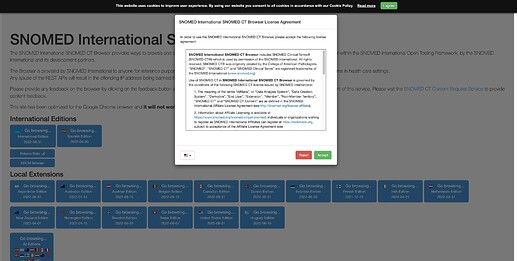I just wanted to jump into the conversation and provide some further information from the team here at SNOMED International to inform the discussion hopefully. We are working with the Bahmni team to understand how SNOMED CT can be used in OpenMRS more directly through FHIR, partly to help us learn more about how we can continue to enhance SNOMED CT to better help EMR implementers but also to provide access to SNOMED CT to those who may not have considered it previously.
Whilst there is a license when using the full SNOMED CT International Edition, we have several products available under a Creative Commons (CC BY 4.0) license that are made up of parts of the full terminology. Of these, the IPS Terminology mentioned earlier in this thread is likely to be the most interesting here as it is a standalone terminology, with all the relationships and hierarchies for those concepts in the IPS.
With regards to postcoordination, SNOMED CT is designed for post-coordination, and we have a helpful guide on when postcoordination is beneficial, but there is also extensive medical knowledge coverage across the ~360,000 pre-coordinated concepts and more than 1.5 million terms, including those listed in the thread. However, we always look to work with the wider community to add missing terms, and we would be very grateful for any of your feedback on missing content.
SNOMED International publishes updated maps, including maps to ICD-10, ICD-O, MedDRA, etc, although we cannot speak for maps in the other directions, so the CIEL may be more appropriate today in that scenario. Our experience has shown that SNOMED CT’s frequent updates can sometimes make intermediary maps hard to maintain, hence our recommendation to use SNOMED CT natively with a FHIR terminology server, but we also understand that not every situation warrants SNOMED CT as the native coding solution.
We were a little confused about the statements that SNOMED CT might not be fit for CDSS-like SMART guidelines, as we know of CDSS deployments that use SNOMED CT specifically. However, we would be grateful for feedback that will help us fill any gaps we have missed.
We are early in our work with Bahmni and OpenMRS, and we hope and intend to contribute to the community as well as learn from you all, so please excuse any missteps on our part, and please do give us any feedback on the use of SNOMED CT in OpenMRS.
